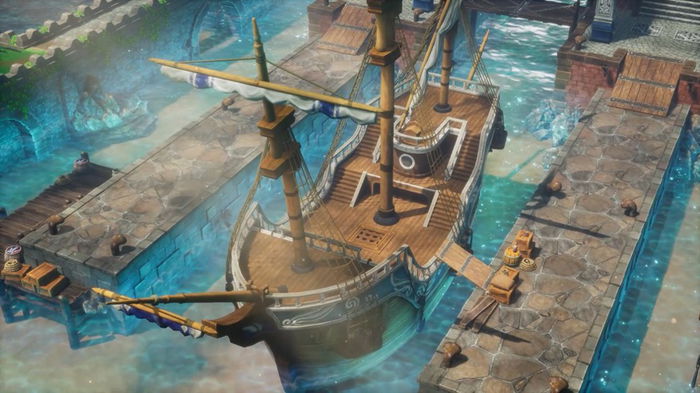There's something magical about revisiting the beginning of a legendary saga. Dragon Quest I & II HD-2D Remake is more than just a new version of the games that gave rise to one of the most important Japanese RPG franchises; it's a celebration of the genre, a reverence for the simplicity that paved the way for everything that came after. Developed with a visual style made famous by the remakes of Octopath Traveler and Live A Live, the title reimagines the first two games in the series with a rare balance between nostalgia and modernity.
Square Enix, aware of the responsibility it carries, delivered a product that respects the history of the original Famicom (NES) games from 1986 and 1987, but also updates it enough to enchant new players. Everything here is familiar, but renewed. Every pixel seems to pulsate with life. Each classic melody, now reinterpreted with orchestra and ambience, awakens an emotion that mixes remembrance and discovery.
A Return to the Origins of Japanese RPGs
Before Final Fantasy, before complex worlds and cinematic narratives, Dragon Quest taught the world what a JRPG was. It introduced concepts that seem commonplace today: turn-based battles, experience-based progression, villages full of talking NPCs, but which, at the time, were revolutionary. The remake of Dragon Quest I & II HD-2D enhances these elements without ever compromising the soul of the original.
The first game, Dragon Quest I, remains a solitary and symbolic journey. You’re the descendant of the legendary hero Loto (or Erdrick, depending on the translation), on a quest to defeat the Dragon Lord and save the kingdom of Alefgard. It's a simple, almost archetypal tale that carries the DNA of classic mythology, and perhaps that's why it never loses its power. The second game, Dragon Quest II: Luminaries of the Legendary Line, increases the scale, introducing a group of heroes and a vaster world, setting the standard for what would become the modern structure of JRPGs.
In the remake, these two adventures were treated with evident care. The transition between the 8-bit style and the HD-2D visuals is masterfully done. The scenarios combine detailed pixel art with lighting and depth effects worthy of a living painting. The result is an experience that feels both like an homage and a new work of art.

A Revolution in Nostalgia
The term “HD-2D” has become a signature of Square Enix for reimagining its classics. It's an aesthetic that combines high-definition 2D sprites with three-dimensional environments and modern lighting and depth-of-field effects. In Dragon Quest I & II HD-2D, this approach perhaps reaches its peak.
The world of Alefgard and the lands of the second game gain a new dimension. The forests shimmer with soft reflections, the castles seem to float between layers of light and mist, and the dungeons, now with subtle dynamic lighting effects, are more immersive than ever. Everything retains the charm of classic pixel art, but with a touch of modernity that breathes new life into the imagination of the 80s.
The characters, drawn in the original style of Akira Toriyama, remain true to their roots. The charm of the sprites is preserved, but now each expression is more legible, each gesture more striking. It's interesting to see how an aesthetic that relies on technical limitations, when updated with sensitivity, seems more expressive than many fully 3D games.
Simple, straightforward, and eternally addictive gameplay
One of the great merits of this remake is understanding that it doesn't need to reinvent the combat system. The battles remain turn-based, direct, and strategic, but the interface has been modernized. The pace is faster, the animations are smoother, and there are small quality-of-life improvements, such as autosave, the ability to speed up battles, and even a mission log.
The first Dragon Quest is minimalist by nature. A single hero faces monsters alone, carefully managing scarce resources and making tactical decisions at every step. The remake respects this, but softens the original difficulty level, which was notoriously punishing. It's a more accessible experience, but still challenging enough to reward planning.
Dragon Quest II presents a remarkable advancement. With three playable characters, the combat system gains more depth, and group abilities allow for varied strategies. The remake improves the balance, correcting one of the biggest problems of the original, which was the steep difficulty curve. Now, progression is smoother, and the final battles are challenging, yet fair.
The dungeons, once labyrinthine and confusing, have been redesigned to take advantage of the new visual style, with more legible maps and lighting effects that aid navigation. Even so, the game retains its spirit of exploration: the feeling of entering a cave without knowing what awaits you is still delightful.
Echoes of the Past with the Sound of the Present
Koichi Sugiyama, the legendary composer of the series, left a legacy that resonates in every note. The remake reinterprets the original music with orchestral arrangements full of emotion. The opening fanfare still sends shivers down your spine, the city melodies sound comforting, and the battle themes blend urgency and heroism. Square Enix hit the mark precisely by maintaining the soul of the original compositions, but with the sonic richness that only a modern orchestra could offer.
There's something almost ritualistic about listening to this music again. It carries the weight of video game history. Players who lived through the 80s will feel a lump in their throat, and newcomers will discover why this soundtrack became a landmark of the genre.

Narrative and Adventurous Spirit
While the story of Dragon Quest I is simple—defeat evil and save the princess—it remains effective because of its purity. It's an archetypal, almost mythical narrative that relies on the hero's journey in its rawest form. Dragon Quest II, however, adds complexity: the protagonists are descendants of the original hero, and the game expands the world, introducing new cultures, kingdoms, and threats.
The remake treats these stories with respect, but also with modern subtlety. Details have been added to dialogues and interactions to give more context and humanity to the characters. NPCs now react to your actions more naturally, and there are new moments that deepen the connection between the protagonists and the legacy of the hero of Loto.
Even so, the narrative structure remains true to the simplicity of the originals. There are no long cutscenes or explanatory dialogues. Everything is told concisely, leaving room for the player's imagination to fill in the gaps, something rare and precious in the era of cinematic scripts.
The Enchantment of Simplicity
The beauty of Dragon Quest I & II HD-2D lies in its ability to feel handcrafted. Each village seems hand-painted, each dungeon is carefully lit, and each battle takes place in vibrant settings, brimming with color and detail. It's a work that honors the 8-bit aesthetic without ever falling into the trap of mere nostalgia.
The intelligent use of light and depth creates moments of pure contemplation. The sunrise in Alefgard reflected on the golden rooftops of the castle; the soft light of the torches in the underground caves; the rain falling on a field of flowers. Everything is designed as a reminder of how video games can be visual art in motion.

Pros and Cons
Pros
- Fidelity with sensitivity: The remake deeply respects the originals, maintaining their structure and essence.
- Stunning HD-2D visuals: One of the most beautiful applications of this technique to date.
- Impeccably orchestrated soundtrack: Faithful to the original compositions but full of new life.
- Accessibility improvements: Quick save, modern interface, and adjusted pacing make the game more fluid.
- Balance between nostalgia and novelty: Pleases both veterans and newcomers.
- Script and setting that evoke a sense of classic journey.
Cons
- Linearity: especially in the first game, the structure is still extremely straightforward.
- Simplified challenges: the smoothed balancing may seem too easy for veterans.
- Lack of robust extras: there’s a lack of bonus content or new modes that encourage multiple playthroughs.
- Narrative economy: some players may find the plot "too simple" compared to modern RPGs.
- Limited camera and depth: the HD-2D aesthetic, however beautiful, imposes visual restrictions in certain areas.
A Legacy That Remains Alive
Playing Dragon Quest I & II HD-2D Remake is like opening a sacred book of Japanese RPGs. These are fundamental chapters in the genre's history, now presented with the grandeur they deserve. The simplicity of the plots, the clarity of the mechanics, and the genuine sense of adventure show how game design can be timeless.
It's impossible not to be moved when you realize that, almost four decades later, these games still manage to captivate us. Every step in Alefgard is a reminder of what motivated gamers in the 80s: curiosity, discovery, the pleasure of getting lost in a world of pure fantasy. And now, with HD-2D, all of that shines again, not just through nostalgia, but through the natural beauty of a design that has stood the test of time.

Dragon Quest I & II HD-2D Remake is a love for the past, but also proof that good ideas never get old. Square Enix not only revived two classics, it reintroduced them to the world with the care of a masterpiece restorer. Every pixel, every note, and every step reverberates with respect and admiration for the history that helped shape the modern RPG.
This remake is an invitation for both veterans and newcomers to revisit the origins, rediscover the charm of simplicity, and realize that the magic of Dragon Quest never depended on technology, but on heart. And that, perhaps, is the greatest triumph of this new version: showing that the past, when well treated, can be brighter than ever.













— Commenti 0
, Reazioni 1
Diventa il primo a commentare